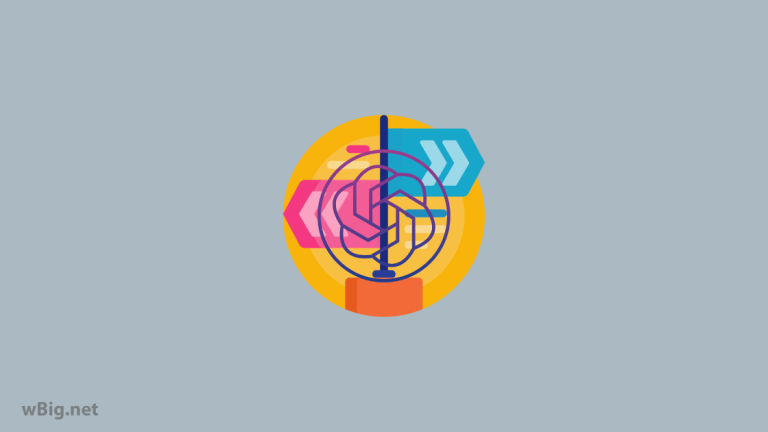These days, ChatGPT has become really popular because of its amazing features. Many of us are curious about GPT because of ChatGPT. Today, we will talk about what does GPT stand for in ChatGPT. Whether you are curious to learning about GPT is a way to better understand the changing world of AI.
Table of Contents
What is GPT
Generative Pre-trained Transformer is what GPT stands for. It is part of a group of programs called large language model (LLMs). GPT is a very powerful computer program developed by OpenAI which is a type of artificial intelligence. It uses patterns collected from a large amount of written content, such as books, papers and codes to understand and generate human-like text.
It can be used for many different things, such as research, education, chatbots and content creation. There have been several generations of GPT models created and the most recent version is the GPT-4 which remains powerful and flexible. It is an efficient tool for text generation and natural language interpretation.
GPT’s Full Name: Generative Pre-trained Transformer
Generative: GPT models can create new text not use existing ones.
Pre-trained: These models have learned a lot from tons of data, so they understand how well the language works.
Transformer: GPT models use a special type of technology called a ‘transformer,’ which is ideal for understanding and working with language.
GPT Releasing History
| Model | Release date | Parameters |
| GPT-1 | 2018 | 117 million |
| GPT-2 | 2019 | 1.5 billion |
| GPT-3 | 2020 | 175 billion |
| GPT-3.5 | 2022 | 137 billion |
| GPT-4 | 2023 | 570 billion |
GPT-1
OpenAI has created a set of great language models called GPT (Generative Pre-trained Transformer). The first GPT-1 came out in 2018. They trained it using about 8 million web pages and it had 117 million parameters.
GPT-2
In 2019 they launched GPT-2. GPT-2 read a large amount of text about 40 GB and had 1.5 billion parameters. GPT-2 was much better than GPT-1. It can make the text more like human and understandable.
GPT-3
GPT-3 is launched in 2020. GPT-3 learned from a huge amount of information about 175 billion parameters. GPT-3 was a major step forward in language modeling. It can create text like human, translate languages, write creative content and provide informative answers to questions.
GPT-3.5
GPT-3.5 released in 2022. It was like an updated version of GPT-3. They trained it with more information and made some improvements to the way it works. GPT-3.5 can create text that is even more like what a human would say and it also can do a wide range of tasks.
GPT-4
In 2023 GPT-4 came out. The latest and most capable version of the GPT model from OpenAI. GPT-4 learned from an even larger collection of information about 570 billion parameters. They also made it work better.
GPT-4 can create human like text, translate languages, write all kinds of creative content and provide helpful answers to questions. It can even create different types of creative content such as poetry, code, texts, music, emails and more. It’s still under development but it’s already great for doing a lot of different tasks.
What GPT Models Do
Generative Pre-trained Transformers (GPT) are highly intelligent computer programs that can do many useful things with language. They can:
- Create Text: Create a new text similar to what it has read. This helps to write articles, blog posts and even cool stuff like poetry or computer code.
- Translate: Able to translate text from one language to another which helps to understand other languages or read foreign material.
- Answer Questions: Answer questions with lots of information and search the web for answers.
- Be Creative: Create all kinds of creative writing, such as poetry, code, scripts, music, emails and letters. It can follow your instructions and complete your requests thoughtfully.
- Write Code: Generate computer code in different languages which is useful for programmers or people learning to code.
- Summarize: Make long documents shorter by selecting key concepts.
- Chatbots: Power chatbots which are like computer friends that talk to you, help with questions or have a fun conversation.
- Research: GPT can help with research on language, reading and smart computing.
What Does GPT Stand for in ChatGPT
In ChatGPT, GPT stands for Chat Generative Pre-trained Transformer, an advanced computer program developed by OpenAI. ChatGPT is a chatbot powered by GPT-3.5 or GPT-4 two advanced OpenAI LLMs. ChatGPT can engage in human-like conversations to create text in a variety of styles and formats including poetry, code, scripts, music, emails and letters.
GPT’s Role in ChatGPT
GPT in the context of ChatGPT plays an important role in enabling ChatGPT to generate human quality text that understands user input and responds in a meaningful way. It achieves this through several key capabilities:
- First: is at the forefront of text generation that creates responses that feel natural and cohesive.
- Second: GPT is a language assistant that understands the logic of program syntax and meaning that allows ChatGPT to interpret users’ questions accurately and provide appropriate answers.
- Third: GPT’s creativity is limitless which allows it to generate various types of creative documents from poetry to text codes to music emails and letters catering to different needs of users.
- Finally: GPT is in a state of constant development and learning from new data and feedback. This continuous learning process gives ChatGPT the ability to deliver improved and more accurate responses over time.
How GPT Helps ChatGPT in Conversations
Text Generation
Central to ChatGPT’s chat capabilities is its ability to generate human-level text. GPT’s training on large texts allows it to understand the patterns and nuances of human language enabling it to generate appropriate responses to situations.
Understanding Language
A GPT’s ability to understand the meaning of a text is critical to effective communication. It can determine the intent behind user input, identify keywords and capture the overall context of the conversation. This deep understanding of language enables ChatGPT to respond accurately and appropriately.
Awareness of Conversational Context
ChatGPT maintains a consistent understanding of the ongoing conversation as it evolves over multiple exchanges. This awareness of context allows him to avoid arguments, maintain a coherent narrative and adapt his responses based on the flow of the conversation.
Natural Language Processing
GPT’s ability in natural language processing (NLP) enables it to handle various aspects of human communication including grammar, syntax and semantics. This language technology allows ChatGPT to generate systematic, well-structured and logical responses.
Flexible Chat Style
ChatGPT can adjust its chat style to suit different users. It can use the formal tone of professional interaction or the casual style of informal conversations. This setting allows ChatGPT to communicate with users on a more personal level.
Learning from Interaction
It continues to improve chat capabilities by learning from its interactions with users. It analyzes the feedback it receives both explicit and implicit to refine its responses and improve its ability to engage in meaningful conversations.
Hosting Open Chat
ChatGPT can host open-ended discussions where the topic or direction of the discussion is not clearly defined. It can create new topics, present relevant information and maintain a back-and-forth dialogue.
Creative Text Generation
ChatGPT’s ability to generate creative text formats, such as poetry, code, scripts, pieces of music, emails, and letters, adds a unique dimension to its conversational capabilities. It can engage in creative activities, express emotions through different spirits and fulfill different needs of users.
In summary, GPT’s advanced capabilities in text generation, language understanding, NLP and dynamic communication give ChatGPT the power to engage in natural, meaningful and engaging conversations. As GPT continues to evolve we can expect ChatGPT’s chat capabilities to reach even greater heights.
Conclusion
In conclusion, GPT in ChatGPT stands for “Generative Pre-trained Transformer.” This acronym represents a series of advanced language models developed by OpenAI starting with GPT-1 and continuing to GPT-4. These models have seen significant improvements in their capabilities over the years with the latest version GPT-4 being the most powerful language model to date. These models are designed to understand and process human-like text making them versatile tools for a wide range of natural language processing tasks.



